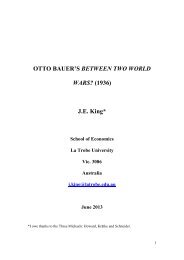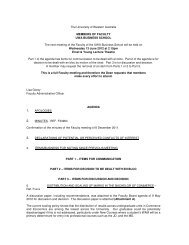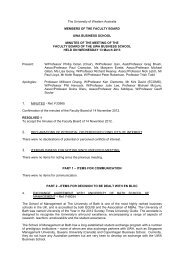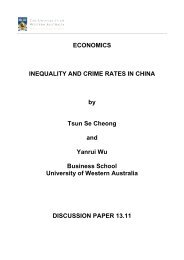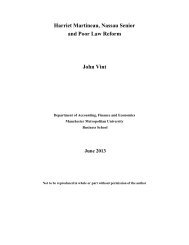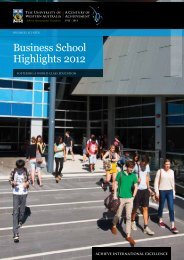A Dynamic Model for determining Inward Foreign ... - Business School
A Dynamic Model for determining Inward Foreign ... - Business School
A Dynamic Model for determining Inward Foreign ... - Business School
Create successful ePaper yourself
Turn your PDF publications into a flip-book with our unique Google optimized e-Paper software.
Table (7) presents the Granger causality tests <strong>for</strong> this 11 variables model. Each of the 11<br />
variables appears to have explanatory power <strong>for</strong> one or more of the other variable in the<br />
system. The effects are direct, but often complex and indirect. In the first equation, inward<br />
FDI in Jordan appears to be significantly influenced by economic risk, the price of stock<br />
market sectors (banks, services, industries and general sectors), inflation rate and GDP.<br />
However, economic risk, stock market price of services and industry sectors, inflation rate,<br />
GDP appear to have strong revers Granger causality on inward FDI in Jordan.<br />
The results in table (7) are consistent with the following studies. Tekin (2012, 873)<br />
investigates potential Granger causality among GDP and <strong>for</strong>eign direct investment least<br />
developed countries <strong>for</strong> the period between 1970 and 2009 using panel data. Tekin reports<br />
that GDP Granger causing FDI in Burkina Faso, Gambia, Madagascar and Malawi. Hansem<br />
and Rand (2006 ) test <strong>for</strong> Granger causality between FDI and GDP in a sample of 31<br />
developing countries finding that FDI has a positive impact on GDP in long run. Gurn-<br />
Gharana and Adhikari (2011, 42) state that Granger GDP causality towards FDI get very<br />
strong support at 1% significant level. Also, Feridun and Sissoko (2011, 13) examine the<br />
relationship between GDP and FDI <strong>for</strong> Singapore. They find that causality running from<br />
FDI to GDP.<br />
The third equation inward FDI and financial risk have effects on economic risk at 10%, but<br />
the stock market price appears to have a significant impact on economic risk at 1%. The<br />
services stock market price sector is explained by inward FDI, banks, industries and general<br />
sector at 10% and 5% respectively. <strong>Inward</strong> FDI, economic risk, banks, services, general<br />
and GDP affect the behaviour of the industries stock market price at 5%. The stock market<br />
price sectors affect inflation at 10%, but the inward FDI, economic and financial risk at 5%<br />
and 1% respectively. <strong>Inward</strong> FDI, economic, industries stock market price, inflation,<br />
interest rate, GDP appears to be explained by the movement of all variables at 1%.<br />
The error correction model is applied to capture the short run dynamic of this model. Table<br />
8 (part a and part b) illustrate the results of error correction model (ECM). Only one error<br />
correction term is included even there are more than one co-integrating vectors as suggested<br />
by Johansen’s multivariate tests because this study investigate the inward <strong>for</strong>eign direct<br />
investment in Jordan rather than of other equations from the variables (i.e country risk,<br />
25




